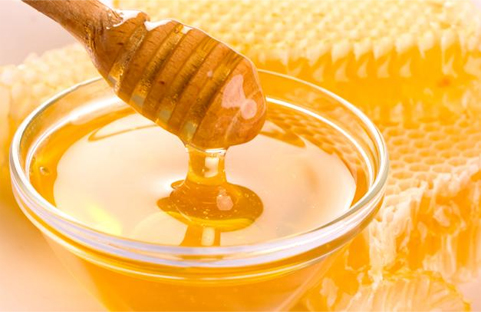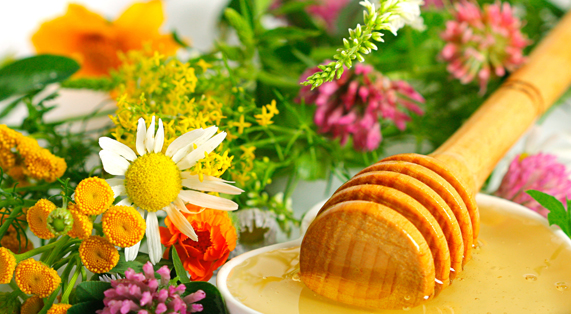الجوانب النسيجية ومحتوى البروتين من أبيس مليفيرا L. العامل الغدد السم: تأثير الصدمات الكهربائية في الصيف والشتاءHistological aspects and protein content of Apis mellifera L. Worker venom glands: the effect of electrical shocks in summer and winter
الجوانب النسيجية ومحتوى البروتين من أبيس مليفيرا L. العامل الغدد السم: تأثير الصدمات الكهربائية في الصيف والشتاء
HHistological aspects and protein content of Apis mellifera L. Worker venom glands the effect of electrical shocks in summer and winterelectrical shocks in summer and winter
R.M.M. ABREU , R.L.M. SILVA de MORAES , O. MALASPINA
فى هذه الورقة يتم تحلل محتوى البروتين الكلي في الصيف والشتاء،
،،،، و -day القديمة أبيس مليفيرا L. عامل السم الغدد قبل (السيطرة)
وساعات بعد تطبيق الصدمات الكهربائية لاستخراج السم
(تجريبي). خلال استخراج السم، استجاب العمال القدامى أكثر ببطء
و ضعيفة على الصدمات الكهربائية. هذا الرد يكثف مع التقدم في السن، حتى أن
والعمال الذين يقتربون من أيام من العمر يستجيبون بشكل أسرع وأكثر قوة للصدمات.
التحليل الإحصائي، باستخدام اختبارات ويلكوكسون غير المعلمية وكروسكال واليس و
تكملها اختبار جونكير، وأظهرت أن محتوى البروتين تختلف من
من عمر إلى آخر في المجموعة التجريبية، والتي كانت متميزة تماما عن
القيم في المجموعة الضابطة في الصيف والشتاء. وكانت القيم الصيفية في جميع الأعمار
دائما أعلى من تلك التي تم الكشف عنها في فصل الشتاء في المجموعتين. ويبدو أن هذا الاختلاف
تشير إلى حدوث أكثر من دورة فصل الشتاء غدي التنمية.
وأظهرت الدراسات النسيجية إفراز في التجويف من مجموعة السيطرة السرية
أنابيب وخزانات. أظهرت المجموعة التجريبية فقط إفراز ظهاري في
الخزانات المنهارة في جميع الأعمار، باستثناء أيام. هؤلاء العمال، التي رد فعل أقل
بكفاءة للصدمات الكهربائية، وأظهر إفراز في التجويف، خزان، والأنابيب،
حتى بعد تطبيق الصدمات الكهربائية. خلال الساعات التالية
والصدمات الكهربائية، وكان ينظر إلى استبدال البروتين طفيف في بعض الأعمار. هذا، على الرغم من
أعلى في فصل الصيف مما كانت عليه في فصل الشتاء، وكان أقل بكثير من مستوى الكشف عنها في
مجموعة السيطرة في جميع الأعمار. وكانت القيم أقل بكثير في كثير من الأحيان في كبار السن
ساعات عمل بعد استخراج ويمكن أن تعكس استيعاب أو تدهور
البروتينات من إفراز غدي بسبب الشيخوخة. تظهر نتائجنا أن السم
الاستخراج أكثر إنتاجية في الصيف باستخدام العمال المسنين. ومع ذلك، قدرتها
من استبدال البروتين القضاء خلال لاذع من الركيزة، ردا على
تظهر الصدمات أن تكون منخفضة، كما هو مبين للنحل تحليلها الأخرى.
ABSTRACT. This paper analyzes the summer and winter total protein content of , , , , , and -day old Apis mellifera L. worker venom glands before (control) and and hours after applying electrical shocks for venom extraction (experimental). During venom extraction, -day old workers responded more slowly and weakly to electrical shocks. This response intensifies with age, so that the workers approaching days old respond faster and more aggressively to the shocks. Statistical analysis, using the non-parametric Wilcoxon and Kruskall-Wallis tests and complemented by the Jonckheere test, showed that the protein content varied from one age to another in the experimental group, which was well distinguishable from the values in the control Group in summer and winter. Summer values at all ages were always higher than those detected in winter in both groups. This variation seems to indicate the occurrence of more than one winter glandular development cycle. Histological studies showed secretion in the lumen of the control Group secretory tubes and reservoirs. The experimental group only showed vestigial secretion in the collapsed reservoirs at all ages, except at days. These workers, which reacted less efficiently to electrical shocks, showed secretion in the lumen, reservoir, and tubes, even after the application of electrical shocks. During the hours following the electrical shocks, a slight protein replacement was seen at some ages. This, although higher in summer than in winter, was much lower than the level detected in the control group at all ages. The significantly lower values were frequent in the older workers hours after extraction and could reflect reabsorption or degradation of proteins from glandular secretion due to aging. Our results show that venom extraction is more productive in summer using older workers. However, their capacity of replacing protein eliminated during stinging of the substrate, in response to shocks is shown to be low, as demonstrated for other analyzed bees. KEY WORDS: bees, histology, protein content, summer, winter, electrical shock, venom gland, Apis mellifera.




